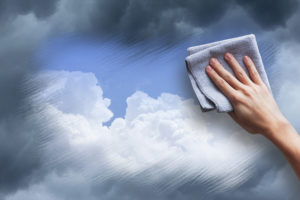
Alaska has been on fire this summer. Flames have burned 2.5 million acres and the resulting smoke has engulfed the majority of the state’s population. The impact and losses were tragic for some, and disruptive for thousands, residents and tourists alike. But every situation carries with it an ability to educate if we pause and take the time to reflect, and this experience is no different.
Air: it’s not something we think about very often. In fact, we rarely think about air at all. Our thoughts are more primal, we think about our ability to breath. And like all things automatic and abundant, we don’t appreciate its value until circumstances change and demand our attention.
Something as simple as a head cold, or as in my case seasonal asthma, bring the value of a simple unencumbered breath into perspective. I promise you; even after a long Alaska winter, I have a love/hate relationship with spring and its companion, pollen. Likewise, stay a little too long underwater and suddenly nothing you own is more important than what lies just above the surface, a breath. It has been said that the most valuable things in life are free. Certainly, air and the ability to breath make the list.
This summer’s smoke-filled air put humankind’s amazing ability to adapt on full display. With its arrival, the first thing to change was the topic of the day; the air, its quality to be precise. Next, monitoring the Air Quality Index (yes, there is one) quickly became a regular ritual. In a matter of days, many in my office were able to assign practical meaning to the Index’s numerical value. In my case for example, I learned that a rating under 100 (50 to 100 is considered moderate) meant I could go for a run, although I preferred a number under 80. As the Index climbed over 100, life became incrementally more uncomfortable. At 150, the unhealthily threshold, any exertion, even indoors, was noticeably more difficult and would likely result in a cough. At 180, just a few minutes outside would cause my eyes to burn, and 30 minutes outside, even in a car, would result in a headache. Our enjoyment of, and expectations for the day, quite literally changed with the wind.

This summer, it immediately became clear that no meaningful air quality policy discussions/debate among governmental and industry leaders had ever taken place in a smoke-filled room, or in downtown Beijing for that matter. And for good reason, there would be no room for debate, because the consequences of bad policy or inaction would be too obvious to ignore, no imagination required.
Today, the pace of environmental, technical and social change demands a leader be agile, imaginative, empathetic and courageous. It is a period of tumultuous change that demands an equally tumultuous change in how we lead. Thus, common sense dictates that different situations demand different leadership qualities. The General that wins the battle is probably not the best person to oversee reconstruction. Stated another way, the leadership traits that create a situation are not likely to be the same qualities needed to resolve it.
Technical change is in our face. Whether it is news about how industry is being disrupted by artificial intelligence and robotics, or simply the start of the workday being postponed by the latest operating system update. Technology is change that cannot be ignored. Accordingly, it is part of the daily conversation. Environmental change is different, it’s more subtle, more easily dismissed. It’s impossible to notice one-degree increase in average global temperature, that is until the wildfires arrive, flood water is at your doorstep, or the path of the latest hurricane commands your attention.
Today’s leaders must possess the ability to imagine a future unlike anything humankind has ever experienced. They must possess the capability and empathy to comprehend the true cost and impact of their decisions. And, they must be imbued with the courage to actively disrupt themselves and their organizations with sustainable strategies that focus on long-term environmental, social and economic wellbeing over tactical short-term gains and quick profits. No longer is it enough for a leader to simply forecast the future by extrapolating historical trends. Nor will a defensive posture rooted in the belief that things will return to normal be sufficient or of service to those that they lead.
We are right to be concerned about our economies, our societies and the impacts of technical change. However, we must also acknowledge that there are environmental changes taking place that demand our attention and action.
It is worth remembering that the most valuable things in life are free and that the failure to recognize and preserve that value can take your breath away.
Reference:
The Guardian – There is no silver lining: Why Alaska fires are a glimpse of our climate future
CNN – Alaska just had the most ridiculous summer. That’s a red flag for the planet.
The Balance – Wildfires facts, Their Damage, and Effect on the Economy
UAFSMOKE – Wildfire Smoke Prediction for Alaska














































Well written, thoughtful and humanly important.
Thank you! I appreciate the positive feedback.
Much appreciated! I am glad you liked the post and appreciate you taking the time to read and comment.
Thank you for taking the time to comment and for your encouraging words. I am glad you found the information useful and hope your presentation goes well.
Thank you for taking the time to comment and for the positive feedback. I hope your presentation went well.